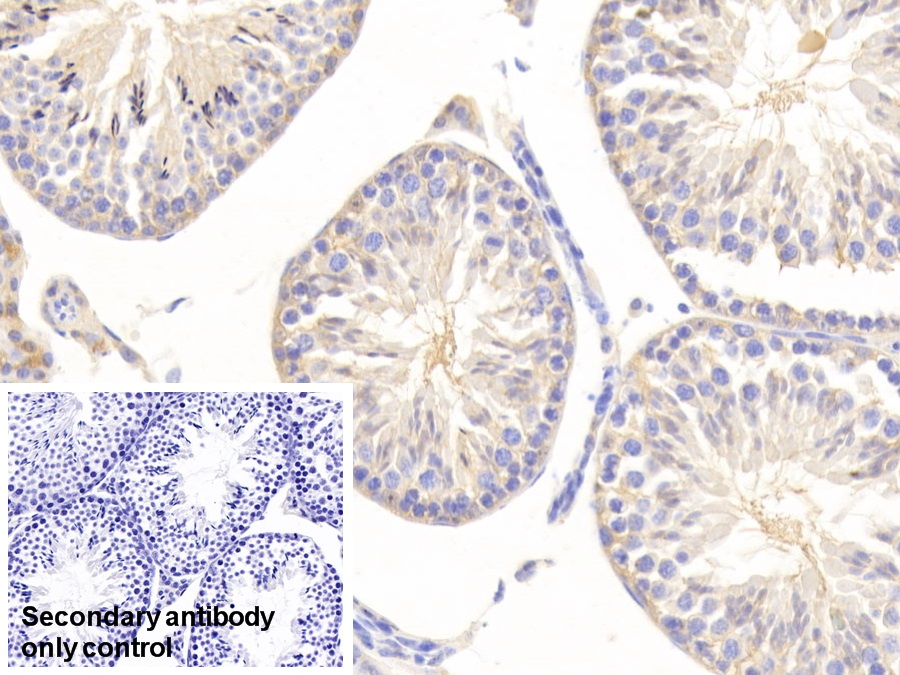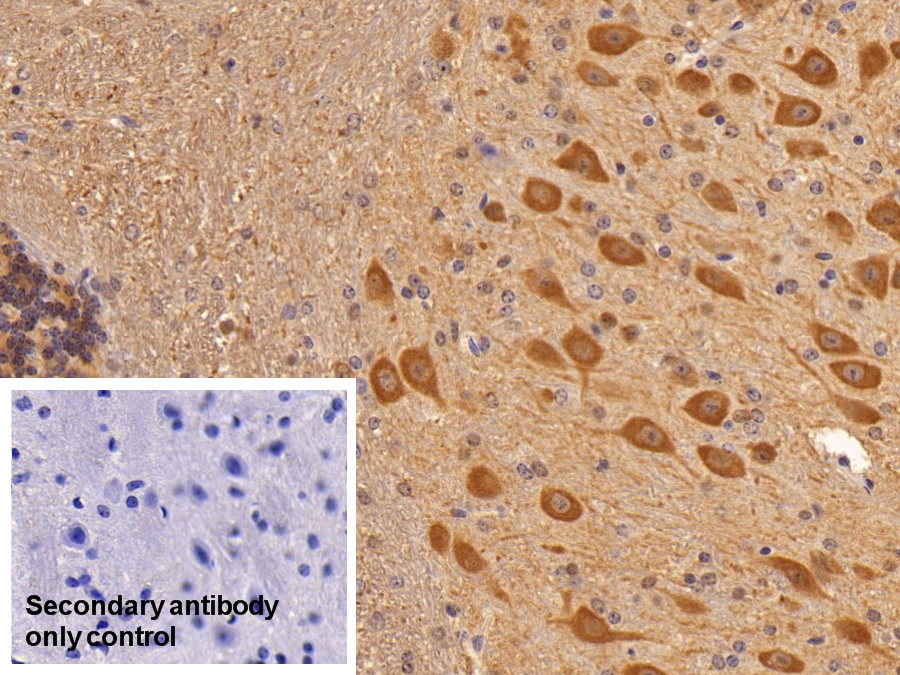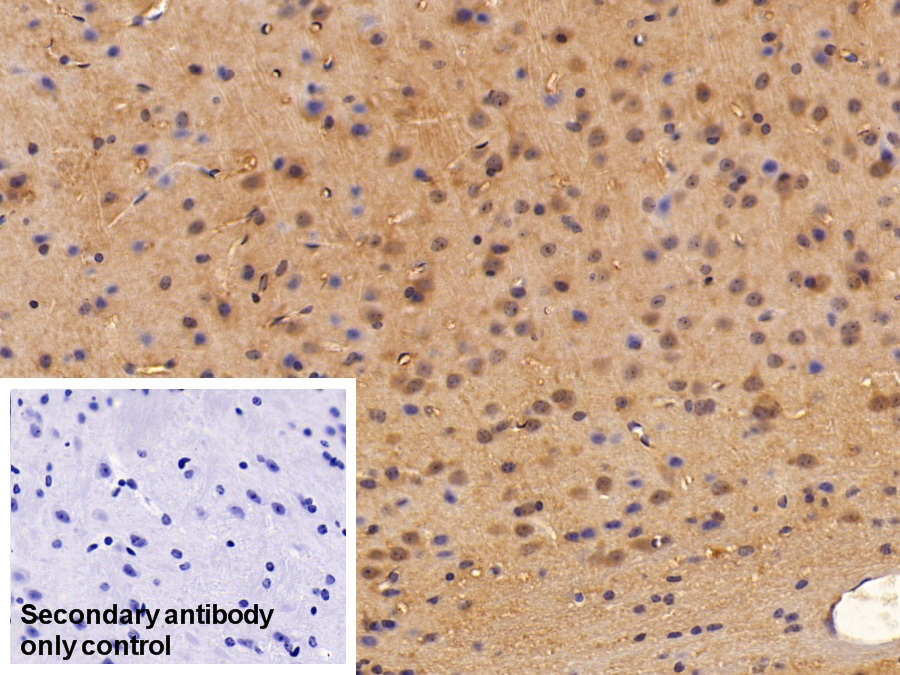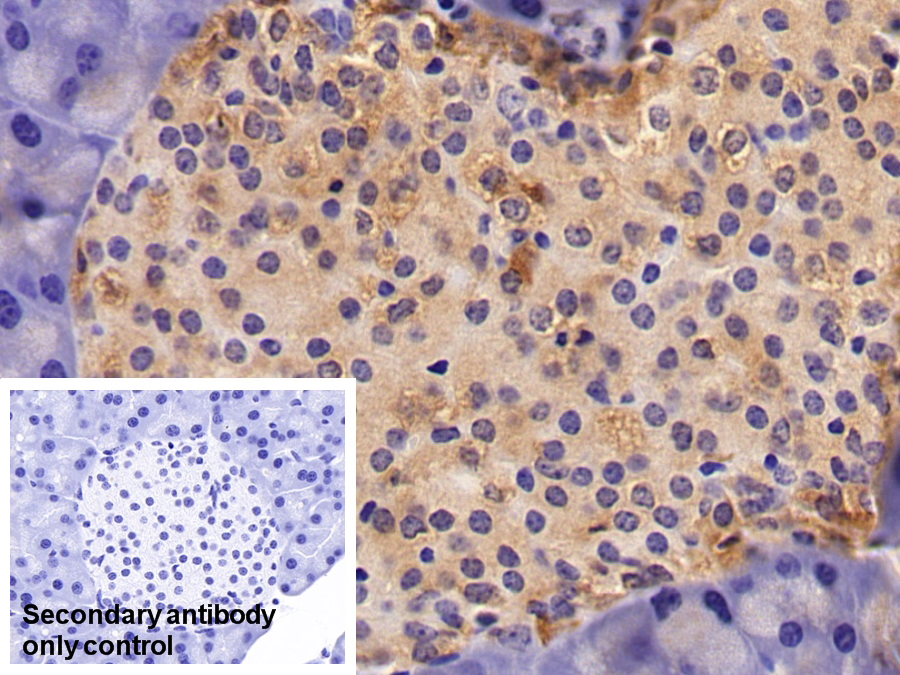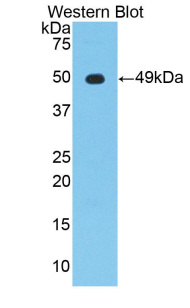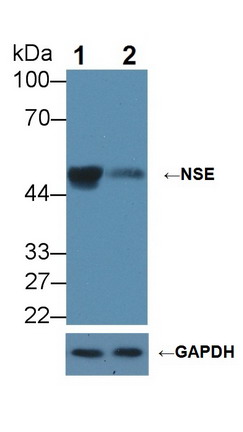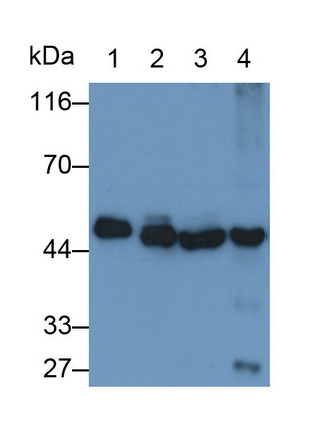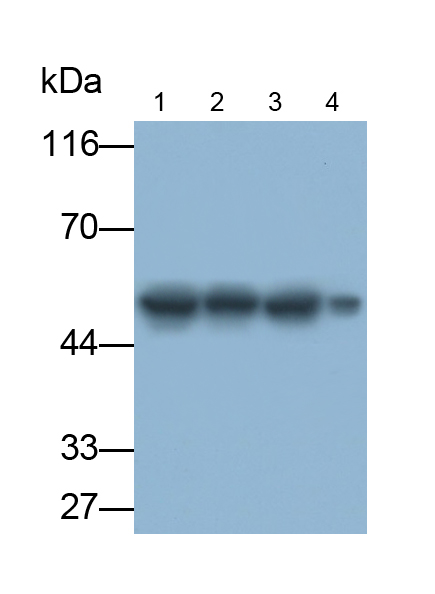- KO-Validated
Polyclonal Antibody to Enolase, Neuron Specific (NSE) 

ENO2; Enolase 2; Gamma Enolase; 2-phospho-D-glycerate hydro-lyase; Neural enolase
Overview
Properties
- Product No.PAA537Mu02
- Organism SpeciesMus musculus (Mouse) Same name, Different species.
- ApplicationsWB,IHC
If the antibody is used in flow cytometry, please check FCM antibodies.
Research use only - DownloadInstruction Manual
- CategoryEnzyme & KinaseTumor immunityInfection immunityNeuro science
- SourcePolyclonal antibody preparation, Host Rabbit
- Ig Type IgG, Potency n/a
- PurificationAntigen-specific affinity chromatography followed by Protein A affinity chromatography
- LabelNone
- Immunogen RPA537Mu02-Recombinant Enolase, Neuron Specific (NSE)
- Buffer Formulation0.01M PBS, pH7.4, containing 0.05% Proclin-300, 50% glycerol.
- TraitsLiquid, Concentration 0.5mg/mL
Sign into your account
Share a new citation as an author
Upload your experimental result
Review

Contact us
Please fill in the blank.
Specifity
The antibody is a rabbit polyclonal antibody raised against NSE. It has been selected for its ability to recognize NSE in immunohistochemical staining and western blotting.
Usage
Western blotting: 0.01-2µg/mL;
Immunohistochemistry: 5-20µg/mL;
Optimal working dilutions must be determined by end user.
Storage
Store at 4°C for frequent use. Stored at -20°C in a manual defrost freezer for two year without detectable loss of activity. Avoid repeated freeze-thaw cycles.
Stability
The thermal stability is described by the loss rate. The loss rate was determined by accelerated thermal degradation test, that is, incubate the protein at 37°C for 48h, and no obvious degradation and precipitation were observed. The loss rate is less than 5% within the expiration date under appropriate storage condition.
Organism Species More: Homo sapiens (Human), Rattus norvegicus (Rat), Sus scrofa; Porcine (Pig)Giveaways
Increment services
-
 Antibody Labeling Customized Service
Antibody Labeling Customized Service
-
 Protein A/G Purification Column
Protein A/G Purification Column
-
 Staining Solution for Cells and Tissue
Staining Solution for Cells and Tissue
-
 Positive Control for Antibody
Positive Control for Antibody
-
 Tissue/Sections Customized Service
Tissue/Sections Customized Service
-
 Phosphorylated Antibody Customized Service
Phosphorylated Antibody Customized Service
-
 Western Blot (WB) Experiment Service
Western Blot (WB) Experiment Service
-
 Immunohistochemistry (IHC) Experiment Service
Immunohistochemistry (IHC) Experiment Service
-
 Immunocytochemistry (ICC) Experiment Service
Immunocytochemistry (ICC) Experiment Service
-
 Flow Cytometry (FCM) Experiment Service
Flow Cytometry (FCM) Experiment Service
-
 Immunoprecipitation (IP) Experiment Service
Immunoprecipitation (IP) Experiment Service
-
 Immunofluorescence (IF) Experiment Service
Immunofluorescence (IF) Experiment Service
-
 Buffer
Buffer
-
 DAB Chromogen Kit
DAB Chromogen Kit
-
 SABC Kit
SABC Kit
-
 Long-arm Biotin Labeling Kit
Long-arm Biotin Labeling Kit
-
 Real Time PCR Experimental Service
Real Time PCR Experimental Service
Citations
- The Anti-Inflammatory and Neuroprotective Effects of Ghrelin in Subarachnoid Hemorrhage-Induced Oxidative Brain Damage in RatsLiebert: 20091210
- Melatonin treatment protects against spinal cord injury induced functional and biochemical changes in rat urinary bladderWiley: source
- Ginkgo biloba Enhances the Anticonvulsant and Neuroprotective Effects of Sodium Valproate Against Kainic Acid-induced Seizures in MiceMedwell: 2011679690
- Comparative gene expression profiling analysis of lymphoblastoid cells reveals neuron‐specific enolase gene (ENO2) as a susceptibility gene of heroin dependencePubMed: 21995595
- Advanced glycation end products as an upstream molecule triggers ROS-induced sFlt-1 production in extravillous trophoblasts: A novel bridge between oxidative stress and preeclampsiaPubmed: 24144948
- Therapeutic time window and underlying therapeutic mechanism of breviscapine injection against cerebral ischemia/reperfusion injury in rats.Pubmed: 24291152
- Detection of β-amyloid oligomers as a predictor of neurological outcome after brain injury.Pubmed: 23540266
- A portable and quantitative enzyme immunoassay of neuron-specific enolase with a glucometer read outRsc: Source
- The effect of therapeutic hypothermia after cardiopulmonary resuscitation on ICAM-1 and NSE levels in sudden cardiac arrest rabbitsPubmed:25111247
- Elevated levels of serum sICAM-1 in asphyxiated low birth weight newbornsPubmed:25358349
- Preconditioning effect of (S)-3,5-dihydroxyphenylglycine on ischemic injury in middle cerebral artery occluded Sprague-Dawley rats.Pubmed:25562631
- 高迁移率族蛋白B1和神经元烯醇化酶对心脏骤停大鼠复苏后脑损伤评价的研究Journal: Fulltext
- Blood–Brain Barrier Function and Biomarkers of Central Nervous System Injury in Rickettsial versus Other Neurological Infections in LaosPubMed: 26055741
- Preconditioning effect of (S)-3, 5-dihydroxyphenylglycine on ischemic injury in middle cerebral artery occluded Sprague–Dawley ratsPubMed: 25562631
- S100B and NSE serum concentrations after simulated diving in ratsPubMed: 26462746
- The effect of electroporation of a lyotroic liquid crystal Genistein-based formulation in the recovery of murine melanoma lesionsPubMed: 26184156
- Isoflurane Post-Treatment Improves Outcome after an Embolic Stroke in RabbitsPubMed: 26645542
- Волгоградский государственный медицинский университетuploads:dsovet
- Synthesis of sunflower-like gold nanostructures and their application in electrochemical immunoassays using the nanogold-triggered hydrogen evolution reactionarticlelanding:c5ay03174e
- 右美托咪定对脑膜瘤切除术患者血清S100β 蛋白及神经元特异性烯醇化酶的影响article:9794
- Perfusion of gastrodin in abdominal aorta for alleviating spinal cord ischemia reperfusion injuryscience:S1995764516300955
- SERUMSKA RAZINA ZA NEURON SPECIFIČNE ENOLAZE KAO BILJEG ISHEMIJSKO-REPERFUZIJSKOG OŠTEĆENJA U BOLESNIKA PODVRGNUTIH KAROTIDNOJ ENDARTEREKTOMIJI262238
- Functional and structural changes of the urinary bladder following spinal cord injury; treatment with alpha lipoic acidpubmed:27490041
- Rosuvastatin improves myocardial and neurological outcomes after asphyxial cardiac arrest and cardiopulmonary resuscitation in ratspubmed:28076830
- Hydrogen-Rich Saline Attenuates Brain Injury Induced by Cardiopulmonary Bypass and Inhibits Microvascular Endothelial Cell Apoptosis Via the PI3K/Akt/GSK3β …pubmed:29040978
- Intra-arterial human urinary kallidinogenase alleviates brain injury in rats with permanent middle cerebral artery occlusion through PI3K/AKT/FoxO1 signaling pathwayPubmed:29510144
- Epigallocatechin-3-Gallate Reduces Neuronal Apoptosis in Rats after Middle Cerebral Artery Occlusion Injury via PI3K/AKT/eNOS Signaling PathwayPubmed:29770336
- S100B, NSE and MMP-9 fail to predict neurologic outcome while elevated S100B associates with milder initial clinical presentation after aneurysmal subarachnoid …Pubmed:29801873
- Nitrosative stress indices in dogs with neurological form of canine distemperDoi: 10.22099/IJVR.2018.4943
- Naomaitai Ameliorated Brain Damage in Rats with Vascular Dementia by PI3K/PDK1/AKT Signaling Pathway
- Effects of Conivaptan versus Mannitol on Post-Ischemic Brain Injury and Edema
- The Administration of the New Pyrimidine Derivative—4-{2-[2-(3, 4-Dimethoxyphenyl)-Vinyl]-6-Ethyl-4-Oxo-5-Phenyl-4H-Pyrimidine-1-Il} Benzsulfamide Restores the …
- Neuroprotective effect of poly (lactic-co-glycolic acid) nanoparticle-bound brain-derived neurotrophic factor in a permanent middle cerebral artery occlusion …Pubmed: 32214270
- Exosomes of Antler Mesenchymal Stem Cells Improve Postoperative Cognitive Dysfunction in Cardiopulmonary Bypass Rats through Inhibiting the TLR2 …Pubmed: 32300366
- Neuroprotective effect of CTRP3 overexpression against sevoflurane anesthesia-induced cognitive dysfunction in aged rats through activating AMPK/SIRT1 and …Pubmed: 32432773
- Effects of Circadian Rhythm Disorder on the Hippocampus of SHR and WKY Rats
- The role of light desynchronosis in the development of stress-induced aging
- ИЗУЧЕНИЕ ЦЕРЕБРОПРОТЕКТОРНОГО ДЕЙСТВИЯ ПРЕПАРАТОВ РАЗЛИЧНЫХ ФАРМАКОЛОГИЧЕСКИХ ГРУПП В УСЛОВИЯХ …
- Investigation of Library Input on Aptamers Selection Efficiency Using Capillary Electrophoresis
- The effect of doxycycline on neuron-specific enolase in patients with traumatic brain injury: a randomized controlled trial34262678
- Perillaldehyde Alleviates Spinal Cord Ischemia-Reperfusion Injury Via Activating the Nrf2 Pathway34399353
- Evaluation of serum neuron specific enolase levels among patients with primary and secondary burning mouth syndrome34644195





